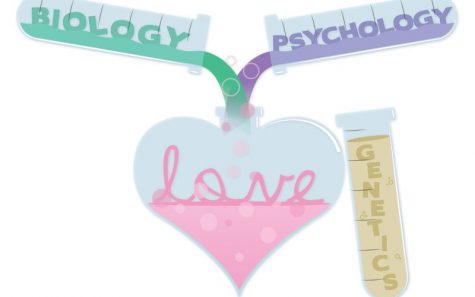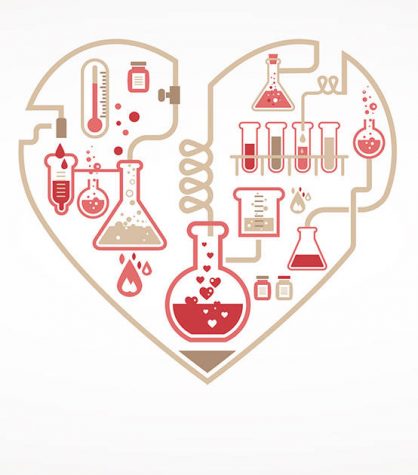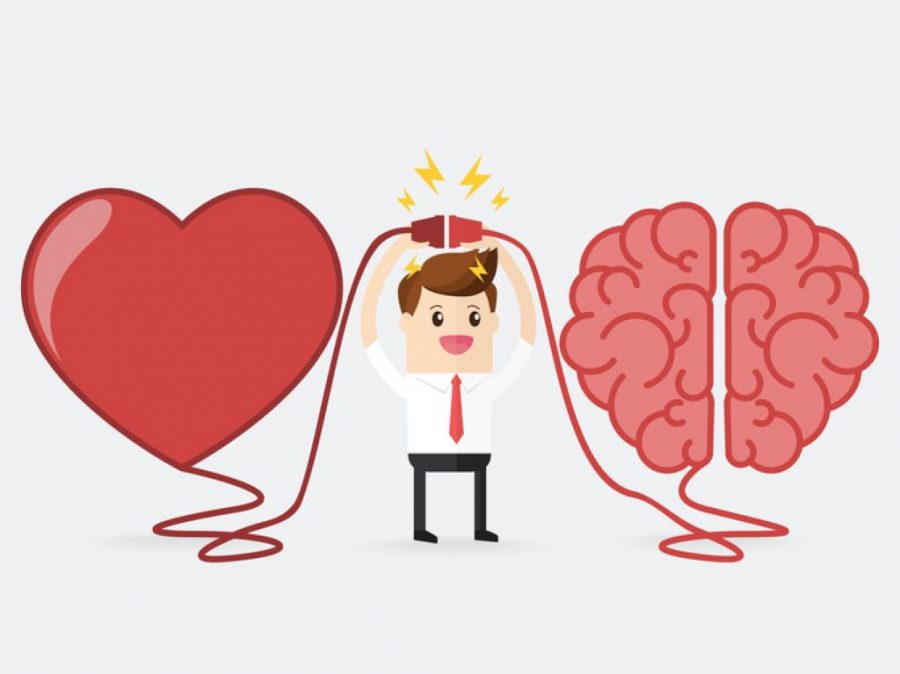What is Love, Really – Explained by Science
The Greek philosopher Plato posited that “love makes us whole, again.” Plato explored the idea that we love in order to become complete. In his book, The Symposium, he wrote about a dinner party at which Aristophanes, a playwright, entertains the guest with the story behind love: humans were once creatures with four legs, four arms, and two faces. One day the humans angered Zeus, who sliced them all in two. Since then, every human has been missing half of him or herself. According to Aristophanes, love is the longing to find a soulmate who will make us feel whole again. While Plato’s account creates a sense of idealistic comfort, the true story behind love lies deep within the realms of mathematics and science.
 According to scientists, there are three main neurotransmitters involved in attraction: dopamine, adrenaline, and serotonin. Dopamine is used by the nervous system of humans to send messages between different cells. Dopamine plays a large role in how humans feel pleasure — couples often have high levels of dopamine resulting in higher energy, suppressed hunger, a higher ability to focus, and less of a need to sleep. Adrenaline, also known as epinephrine, enhances the “fight or flight” response within humans by increasing blood flow towards the muscle cells, increasing carbohydrate metabolism, and increasing breathing rate. When humans first start to fall in love, their stress response is activated. This increases the level of adrenaline and cortisol in the blood and explains why one may have sweaty palms and a racing heart when encountering a person they find attractive. Serotonin is the key hormone for the stabilization of feelings of well-being and happiness by enabling the interaction and communication between brain cells and other nervous system cells. Serotonin levels are actually shown to drop for people who are in love. This drop can compare to the level of serotonin that a person with obsessive-compulsive disorder (OCD) might have, which explains the anxiousness and nervousness that often accompanies falling in love.
According to scientists, there are three main neurotransmitters involved in attraction: dopamine, adrenaline, and serotonin. Dopamine is used by the nervous system of humans to send messages between different cells. Dopamine plays a large role in how humans feel pleasure — couples often have high levels of dopamine resulting in higher energy, suppressed hunger, a higher ability to focus, and less of a need to sleep. Adrenaline, also known as epinephrine, enhances the “fight or flight” response within humans by increasing blood flow towards the muscle cells, increasing carbohydrate metabolism, and increasing breathing rate. When humans first start to fall in love, their stress response is activated. This increases the level of adrenaline and cortisol in the blood and explains why one may have sweaty palms and a racing heart when encountering a person they find attractive. Serotonin is the key hormone for the stabilization of feelings of well-being and happiness by enabling the interaction and communication between brain cells and other nervous system cells. Serotonin levels are actually shown to drop for people who are in love. This drop can compare to the level of serotonin that a person with obsessive-compulsive disorder (OCD) might have, which explains the anxiousness and nervousness that often accompanies falling in love.
In addition, humans secrete, through their skin and tears, chemicals known as pheromones, which can affect the behavior of other surrounding humans. Pheromones attraction can actually help one find their most genetically compatible mate. In what is known as the “Sweaty T-Shirt” experiment, Swiss Zoologist Claus Wedekind set up a test of female sensitivity to male odors. Wedekind selected 49 men and 44 women with a variety of different MHC gene types. The men were given a clean T-Shirt, which they wore for two nights and then gave back to the scientists. In the laboratory, the scientists put the T-Shirts in a box equipped with a smelling hole and invited the women to sniff the boxes. The women preferred the shirts worn by men whose MHC genes were different than their own. Although this experiment did not test male attraction to female odors, it does suggest that evolution has provided humans with an ability to base mate choice off of genetics.
 The human sense plays an important role in attraction, as well. As seen with pheromones attraction and Wedekind’s “Sweaty T-Shirt” experiment, smell plays a large role in attraction. Sight plays just as large of a role in attraction as our instinct is to be visually attracted to a person who shows characteristics of being fit for reproduction. Our ears provide a large contribution, hearing a person’s voice or the way they speak, in some cases, can higher or lower the levels of attraction. Lastly, however, a sense of touch can greatly influence a person’s interest in pursuing a relationship. Many become uninterested in a person after a “bad” first kiss. With close human-to-human contact, the sense of taste, touch, and smell are all working together. This is seen when the brain reacts positively to a first kiss: one’s body is flooded with norepinephrine, a chemical that acts both as a neurotransmitter and a stress hormone. Norepinephrine is released into the bloodstream when the brain senses a stressful event has occurred, enabling increased signaling between nerve cells. With norepinephrine, the human body reverts into fight or flight mode — the heart beats faster, one’s sense of time is warped, and one’s memory is improved. Norepinephrine, additionally, creates a tunnel vision to help one focus on, or run away from, the person of interest.
The human sense plays an important role in attraction, as well. As seen with pheromones attraction and Wedekind’s “Sweaty T-Shirt” experiment, smell plays a large role in attraction. Sight plays just as large of a role in attraction as our instinct is to be visually attracted to a person who shows characteristics of being fit for reproduction. Our ears provide a large contribution, hearing a person’s voice or the way they speak, in some cases, can higher or lower the levels of attraction. Lastly, however, a sense of touch can greatly influence a person’s interest in pursuing a relationship. Many become uninterested in a person after a “bad” first kiss. With close human-to-human contact, the sense of taste, touch, and smell are all working together. This is seen when the brain reacts positively to a first kiss: one’s body is flooded with norepinephrine, a chemical that acts both as a neurotransmitter and a stress hormone. Norepinephrine is released into the bloodstream when the brain senses a stressful event has occurred, enabling increased signaling between nerve cells. With norepinephrine, the human body reverts into fight or flight mode — the heart beats faster, one’s sense of time is warped, and one’s memory is improved. Norepinephrine, additionally, creates a tunnel vision to help one focus on, or run away from, the person of interest.
(Article Continued In “What is Love, Really – Explained by Math,” linked here)
Sources:
https://www.youtube.com/watch?v=5sY4rhvB9LE
https://www.youtube.com/watch?v=oT5qeQft5CE
https://www.pbs.org/wgbh/evolution/library/01/6/l_016_08.html

Siona Manocha, a senior, has attended Keystone School since kindergarten. Through The Keynote, Siona employs the use of visual art and media to highlight...

Shreya Chaudhary is a senior planning to major in data science or computer science. She interns with TigerGraph, promotes and tutors women in STEM through...

